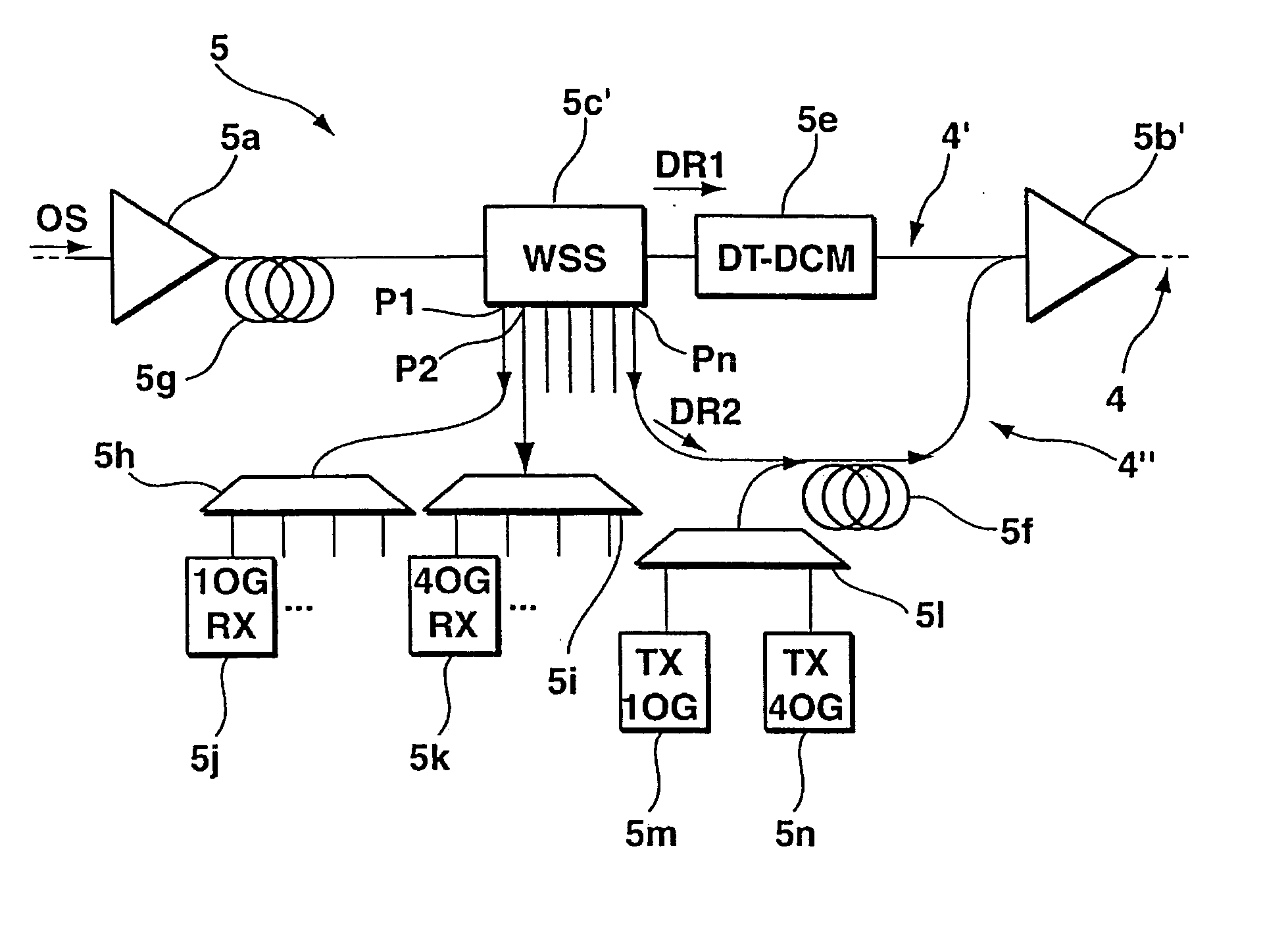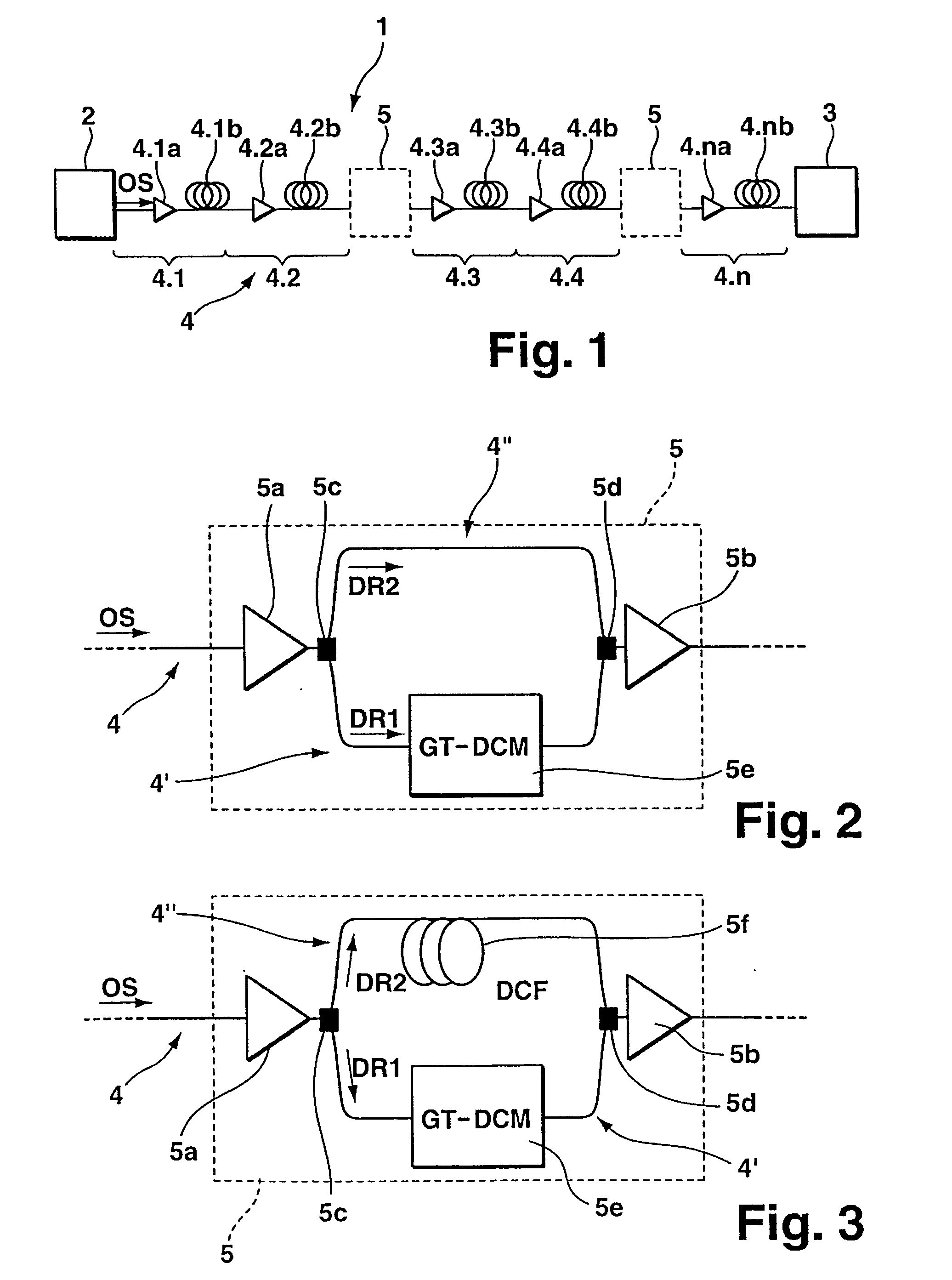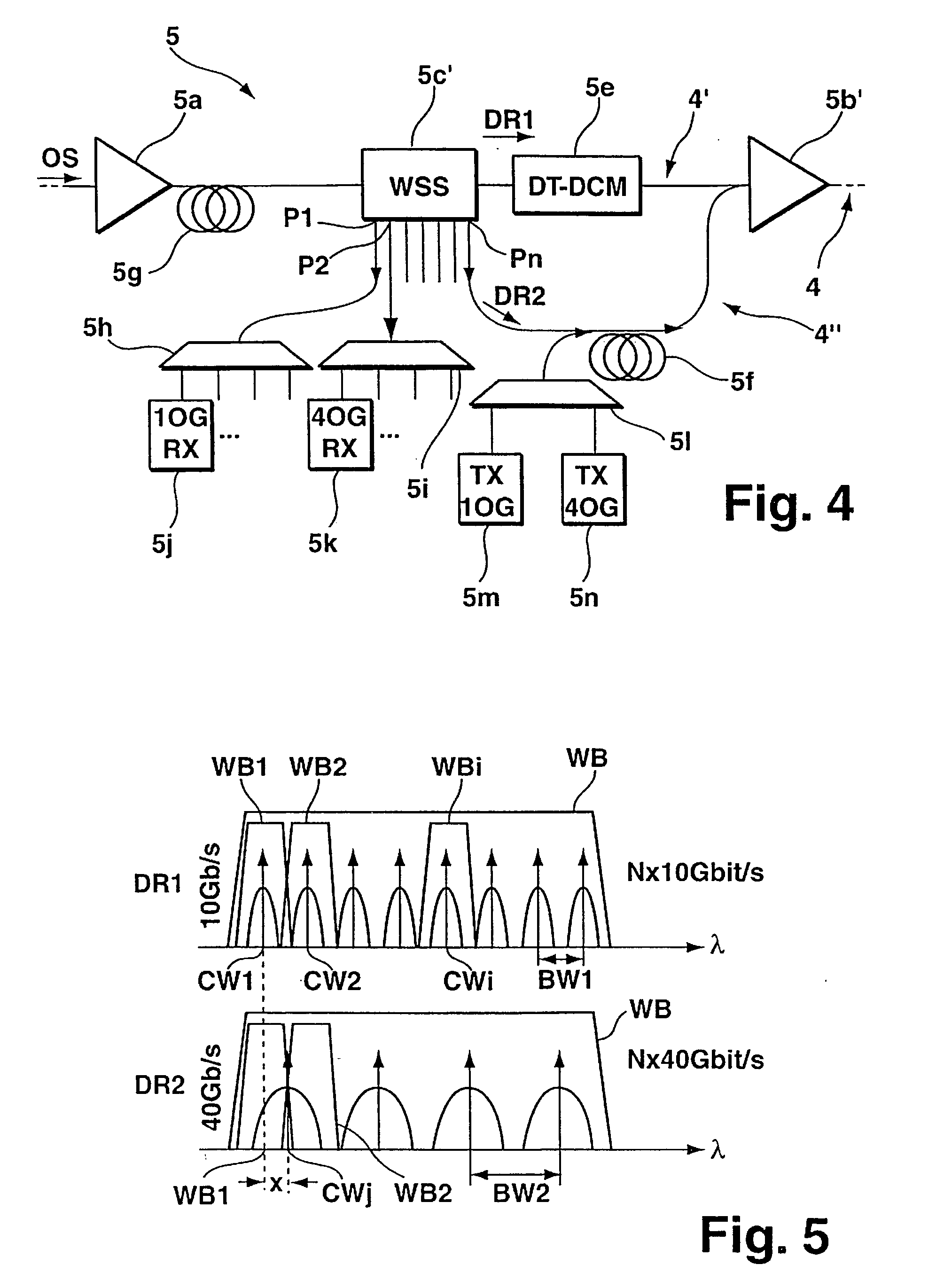Optical network element for compensating dispersion-related propagation effects
a network element and propagation effect technology, applied in the direction of distortion/dispersion elimination, fibre transmission, electrical equipment, etc., can solve the problems of channel cross talk, severe impact of cross-channel non-linear effects on wdm optical signal transmission at data rate of 10 gbit's, and approach is not compatible with state of the art 40 gbit/s systems. , to achieve the effect of minimising the impact of cross-linear effects
- Summary
- Abstract
- Description
- Claims
- Application Information
AI Technical Summary
Benefits of technology
Problems solved by technology
Method used
Image
Examples
first embodiment
[0035]FIG. 2 shows a schematic block diagram of the network element 5 as comprised in the inventive optical transmission system 1 of FIG. 1. The network element 5 generally comprises an input amplifying means 5a and an output amplifying means 5b, e.g. input and output OFAs, respectively. Downstream of the input amplifying means 5a the network element 5 comprises a (tuneable) band demultiplexing means 5c arranged in the optical transmission link 4. At the band demultiplexing means 5c the optical transmission link 4 branches into a first branch 4′ and a second branch 4″ which recombine at a band multiplexing means 5d arranged in front of the output OFA 5b. In the first branch 4′ there is located a first Dispersion Compensating Module (DCM) 5e in the form of a Gires-Tournois (GT) dispersion compensating module. Alternatively, the first DCM 5e could be devised as a Virtually Imaged Phased Array (VIPA), a ring resonator, a fibre Bragg grating (FBG), or generally any other dispersion comp...
third embodiment
[0039]FIG. 4 shows a more detailed block diagram of the network element 5 in accordance with the present invention, as comprised in the optical transmission system 1 of FIG. 1. Again, elements already described above with reference to appended FIGS. 2 and 3 have been assigned the same reference numerals in FIG. 4. Basically, the embodiment of FIG. 4 is derived from the embodiment previously described with reference to FIG. 3 and further comprises a third dispersion compensating module (DCM) 5g arranged between the input OFA 5a and the band demultiplexing means which in the present embodiment is devised as a wavelength-selective switch (WSS) 5c′. The WSS 5c′ has a number of ports P1, P2, . . . , Pn for outputting wavelength-selected tributary signals of the optical signal OS. Port P1 is connected with a demultiplexing means 5h, and port P2 is connected with a demultiplexing means 5i. In operative connection with demultiplexing means 5h there are provided a number of receiver units 5j...
fifth embodiment
[0047]FIG. 8 shows a block diagram of the network element 5 in accordance with the present invention, as comprised in the optical transmission system 1 of FIG. 1. The embodiment of FIG. 8 is basically similar to that of FIG. 4 described above, and same or similar elements have been assigned the same reference numerals. As explained in connection with FIG. 4, the network element 5 of FIG. 8 comprises a third dispersion compensating module (DCM) 5g arranged between the input OFA 5a and the band demultiplexing means which in the present embodiment is devised as a first optical coupler 5c″. The coupler 5c″ is connected via a second optical coupler 5.c′″ with demultiplexing means 5h and with demultiplexing means 5i. In operative connection with demultiplexing means 5h there are provided a number of receiver units 5j adapted for receiving tributary signals of said first data rate, i.e. 10 Gbit / s, as already explained above with reference to appended FIG. 4. In operative connection with de...
PUM
 Login to View More
Login to View More Abstract
Description
Claims
Application Information
 Login to View More
Login to View More - R&D
- Intellectual Property
- Life Sciences
- Materials
- Tech Scout
- Unparalleled Data Quality
- Higher Quality Content
- 60% Fewer Hallucinations
Browse by: Latest US Patents, China's latest patents, Technical Efficacy Thesaurus, Application Domain, Technology Topic, Popular Technical Reports.
© 2025 PatSnap. All rights reserved.Legal|Privacy policy|Modern Slavery Act Transparency Statement|Sitemap|About US| Contact US: help@patsnap.com



